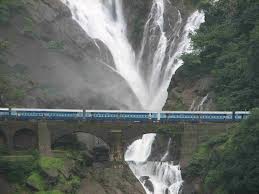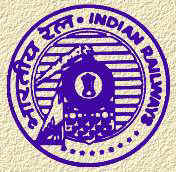 Railways, first introduced in India in 1853, is owned and operated by the government. By completion of the proposed high-elevation all weather Bilaspur-Mandi-Leh railway broad gauge line of almost 498 km, is expected to become the highest railway track in the world overtaking the current record of China’s Qinghai-Tibet Railway.
Railways, first introduced in India in 1853, is owned and operated by the government. By completion of the proposed high-elevation all weather Bilaspur-Mandi-Leh railway broad gauge line of almost 498 km, is expected to become the highest railway track in the world overtaking the current record of China’s Qinghai-Tibet Railway.
World Railways, 2014-15
Sources: International Union of Railways
| Country | Length of track (km) |
| United States Russia India China Canada Germany Australia Argentina France Brazil Japan |
240,000 128,000 116,000 112,000 46,552 41,981 38,445 36,966 29,640 29,303 27,182 |
Notes:
- Indian Railways comprises of 116,000 km of track over a route length of 65,436 km. About 24,891 km or 38% of the route-kilometres was electrified as on 31 March 2014
- The world’s longest rail line is in Russia extends about 5,600 miles (9,010 kilometers) between Moscow and Vladivostok.
- Laid end-to-end, the tracks of the world’s main railroad routes would stretch about 800,000 miles (1,370,000 kilometers)–about 3.25 times the distance from the earth to the moon.
 Indian Railways (IR) statistics, 2014-15:
Indian Railways (IR) statistics, 2014-15:
- In 2014-15, IR carried 8.397 billion passengers annually or more than 23 million passengers a day (roughly half of whom were suburban passengers).
- Indian Railways is the world’s seventh largest commercial or utility employer, by number of employees, with over 1.307 million employees.
- IR has 7,172 stations.
- IR runs 12,617 passenger trains and 7,421 freight trains daily.
- As for rolling stock, IR holds over 239,281 Freight Wagons, 62,924 Passenger Coaches and 9,013 Locomotives (43 steam, 5,345 diesel and 4,568 electric locomotives).
- Gauges used: 1,676 mm Broad Gauge (BG), 1,000 mm Metre Gauge (MG) and two Narrow Gauges, 762 mm & 610 mm
- Out of some 30,300 level crossings, more than 11,000 are unmanned.
- The first train to be fitted with a bio-toilet was the Gwalior-Varanasi Bundelkhand Express in 2011. Since then, the number of coaches with bio-toilets have grown steadily, from 57 in 2011 to 17,388 by 2015.
Indian Railways revenues
| Year | Revenue (Rs Crore) |
Surplus before Dividend (Rs Crore) |
| 2014-15 | 163,450 | – |
| 2011-12 | 104,279 | 4,612 |
| 2007-08 | 71,218 (est) | 21,578 |
| 2004-05 | 47,370 | – |
In 2014–2015, Indian Railways revenues consisted of Rs 106,930 crore from carrying 1050.18 million tons freight and Rs 40,280 crores from passengers tickets.
In 2008, the average time to unload, repair, refuel and reload a freight train in India was just 5 days, compared to 7.1 days in 2001, which means that 800 trains leave on a new journey each day, rather than just 550. Given that an additional trip can earn up to $15 million, the improvement made an important contribution to Railway’s bottom line, bringing in an extra $1.5 billion a year.
These are the UNESCO World Heritage sites on Indian Railways:
- The Chatrapati Shivaji Terminus, Mumbai
- Darjeeling Himalayan Railway, a narrow gauge railway in West Bengal.
- Nilgiri Mountain Railway, a 1,000 mm (3 ft 3 3⁄8 in) metre gauge railway in the Nilgiri Hills in Tamil Nadu.
- Kalka-Shimla Railway, a narrow gauge railway in the Shivalik mountains in Himachal Pradesh. In 2003 the railway was featured in the Guinness Book of World Records for offering the steepest rise in altitude in the space of 96 kilometre.
 World road networks, 2014
World road networks, 2014
Source: World Book Encyclopedia
| Country | Length of roads (million km) |
| USA India China Brazil Russia Japan Canada France Australia Spain |
6.59 4.87 4.36 1.75 1.4 1.21 1.04 1.03 0.82 0.68 |
Notes:
- India is becoming a road dominant economy, with India’s road network carrying over 65 percent of its freight and about 85 percent of passenger traffic.
- Road network was 33 lakh km in 2003 and 4 lakh km in 1950! At 0.66 km of roads per square kilometer of land the quantitative density of India’s road network is similar to that in the United States (0.65) and far higher than that of China’s (0.16) or Brazil’s (0.20).
- India had only 1,324 km length of expressways, as of 2014.
 As of 2009, 49 percent (about 2.1 million km’s), of Indian roads were paved and only about 16% of India’s roads were four lanes or above.
As of 2009, 49 percent (about 2.1 million km’s), of Indian roads were paved and only about 16% of India’s roads were four lanes or above.- The average road speed in India has increased to 30-40 kilometers per hour. The worldwide average road speed ranges between 60-80 kilometers per hour.
- For effective management and administration, Indian roads are divided into National Highways, State highways, district roads and village roads. National Highways have been assigned to National Highway Authority of India (“NHAI”). State highways, district roads and village roads are the responsibility of the State governments.
Registered vehicles in India
Source: Regional Transport Offices of India
| Year | Registered vehicles |
| 2010 2001 1991 1980 1950 |
10,00,00,000 5,49,91,000 2,34,00,000 52,00,000 3,00,000 |
 Indian ports cargo
Indian ports cargo
Source: Indian Ports Association
| Year | Cargo handled (million tonnes) |
| 2013-14 2010-11 2009-10 2005-06 2000-01 1996-97 |
972.69 850 756 423 (major only) 390 227 |
Notes:
- India has a coastline spanning 7516.6 kilometers, forming one of the biggest peninsulas in the world. India has 14,517 km of waterways (ranked 9th in the world).
- India’s 13 major ports in order of cargo handled are Kandla Port; Paradip Port; Jawaharlal Nehru Port, Mumbai; Mumbai Port; Visakhapatnam Port; Chennai Port; Kolkata Port; New Mangalore Port; Chidambaranar (Tuticorin) port; Ennore port; Kochi Port; Mormugao Port; Port Blair. The primary responsibility for management of major ports rests with the Central Government.
- India has 200 notified minor and intermediate ports, whose administration is the responsibility of the State Government.
- There are also 7 shipyards under the control of the central government of India, 2 shipyards controlled by state governments and 19 privately owned shipyards.
- Indian merchant navy fleet is 22nd in the world with a capacity of Gross registered tonnage of 8.5 million tonnes and Dead weight tonnage of 14.6 tonnes
 Busiest airports in India, Jan-Dec 2014
Busiest airports in India, Jan-Dec 2014
Source: Airports Authority of India
| Airport | Fliers in crores |
| New Delhi Mumbai Bangalore Chennai Kolkata Hyderabad Kochi Ahmedabad Goa Pune |
3.97 3.53 1.45 1.38 1.07 0.98 0.62 0.48 0.45 0.4 |
Domestic flight travel
Source: Travel Agents Association of India
| Domestic fliers | In Lakhs |
| 2009-10 | 1240 (international included) |
| 2008-09 | 411 |
| 2007-08 | 433 |
| 2006-07 | 327 |
| 2005-06 | 210 |
| 2004-05 | 160 |
Notes:
- India has a total of 352 airports and 40 heliports, as of 2010.
- India has the world’s highest helipad at the Siachen Glacier a height of 6400 metre (21,000 ft) above mean sea level.
- Hindustan Aeronautics Limited (HAL) is the country’s mammoth aeronautical organization and one of the major aerospace complexes in the world.
